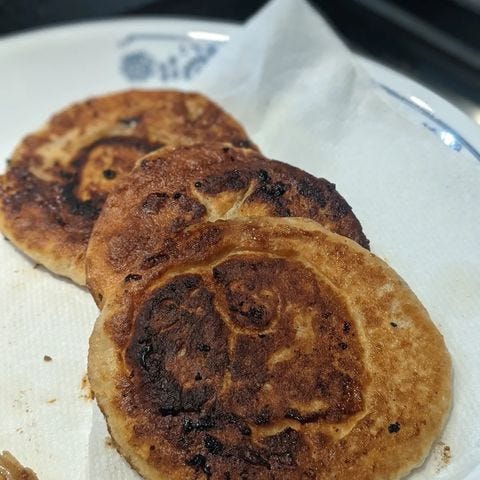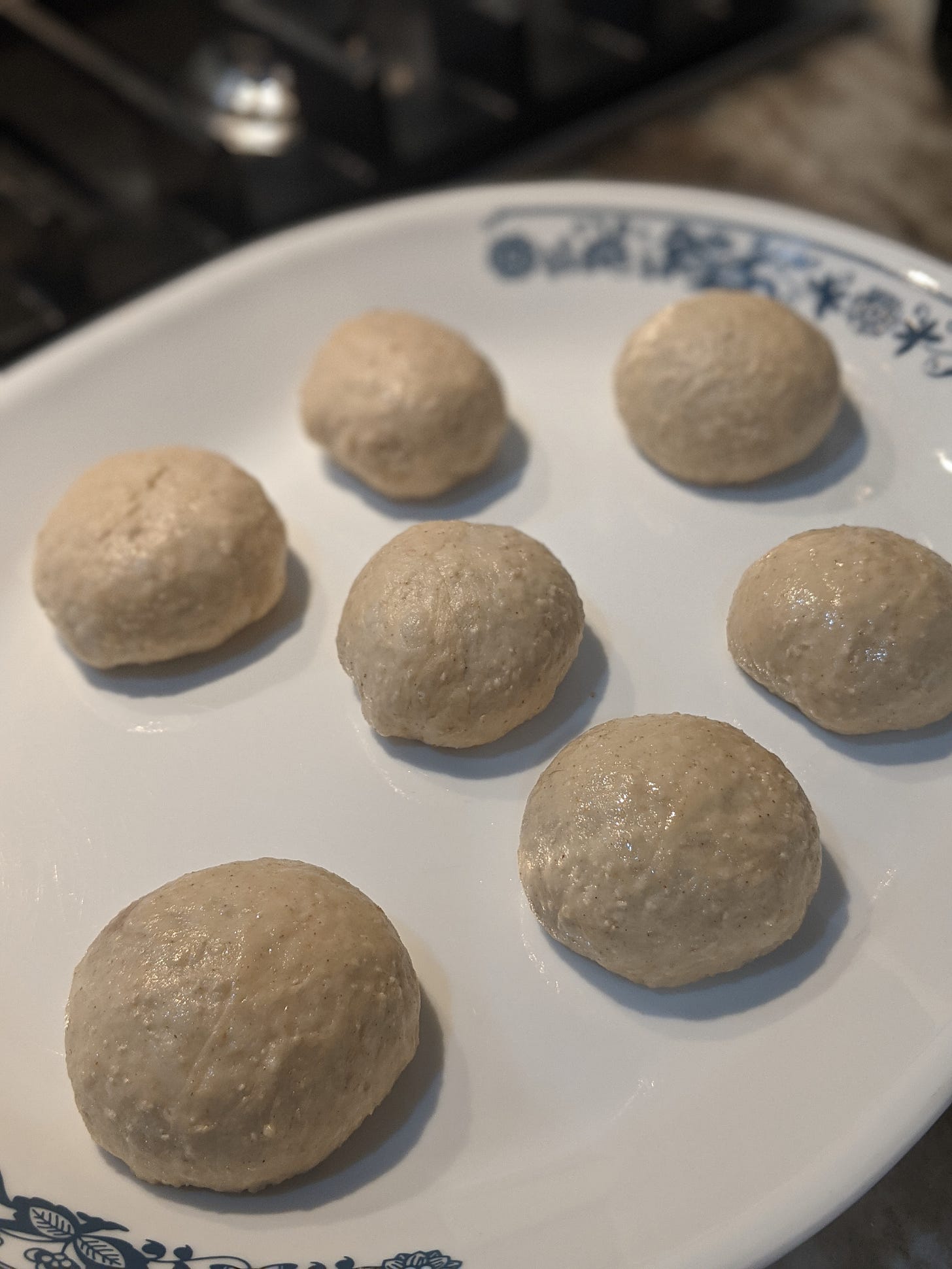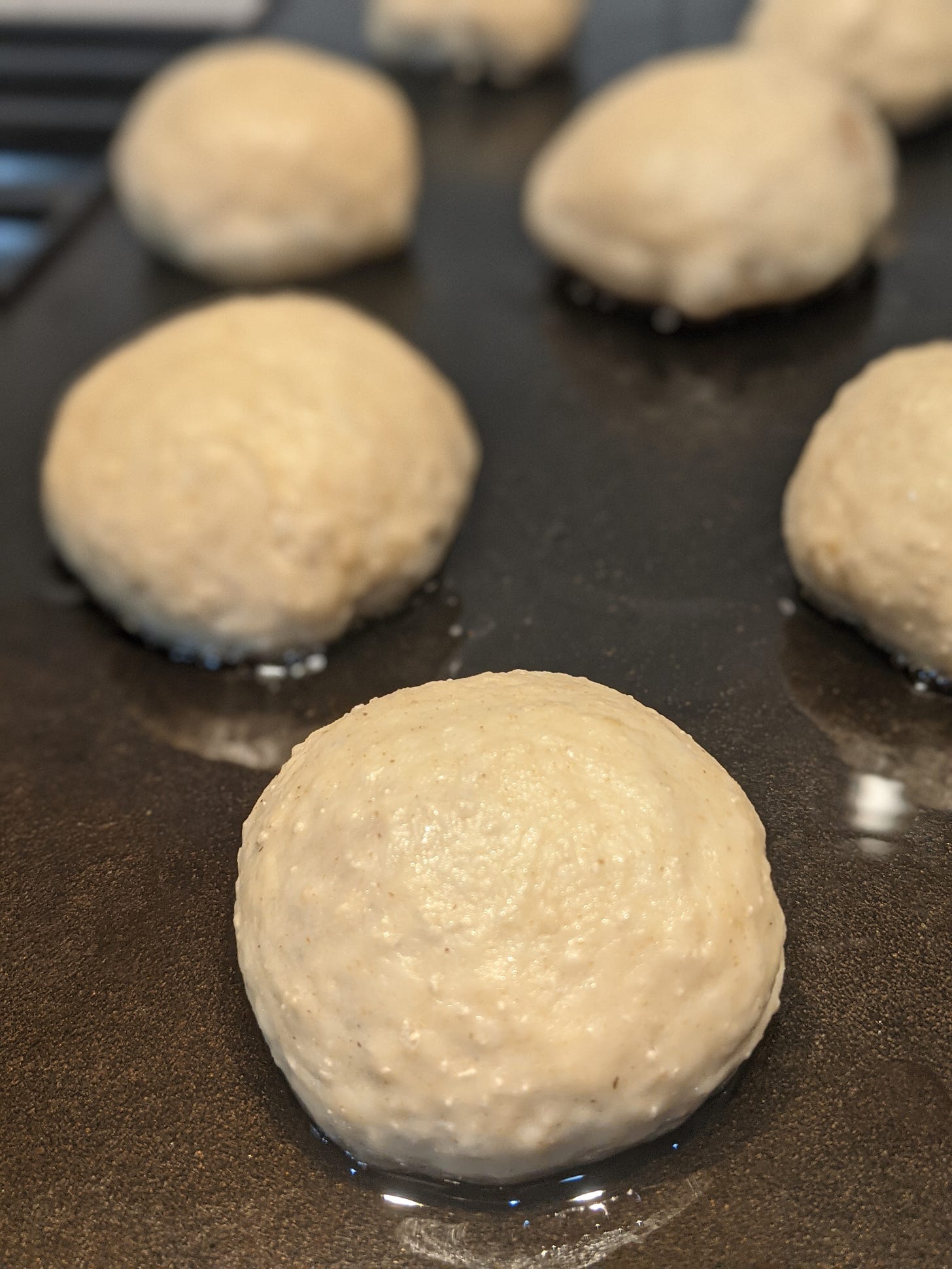Hotteok: Ultimate Korean Street Food
Fried and filled, sweet Korean pancakes aren't as easy to make at home
I made my first batch of Hotteok/hoeddeok, a popular South Korean street food that mixes a risen, leavened dough with a brown-sugar/nut filling before being fried in a shit-ton of oil.
The dough’s fairly straightforward: it’s your basic yeast dough to do with as you will.
Same with dividing out six balls of dough and filling them, more or less.
But the frying, ah, the frying is the trickiest part, because you literally have seconds to play with.
I played with My Korean Kitchen’s recipe. Here’s what I did or would do differently next time:
Make a bigger batch. Just double the recipe.
Let the dough ferment a little longer to develop more flavor. Maybe overnight it?
Instead of flattening and filling on my oiled palm, I did it on the counter, taking care not to flatten the dough too thin. I did on one dough ball, and watched it tear, spilling out all the filling. But not to worry, the dough is very forgiving; just grab the thicker ends and re-fold/re-seal.
I also gently and loosely rolled the dough into balls, seven instead of the six in the recipe, when I divided them out and when I sealed in the filling. Btw, don’t stress about how many balls you get. You can go over, just add less filling. You’re not a street vendor.
The recipe says to add “crushed” nuts to the filling. Just chop them fine or use a food chopper.
Don’t be like me and throw the filled dough balls all on the flat iron. Some cooked faster than others. Fry up in small batches. Maybe two or three at a time.
Invest in a hotteok press. You’ll crank your hand pressing with a spatula, especially if you have trigger finger. Plus, your hotteok will be bigger with a proper press, so you can fold them in half, like the street vendors do at the Korean markets.
Don’t follow the cooking time exactly. That’s why the food blogger says things like “about 30 seconds.” About, meaning, use your head. As long as you have the heat on medium, you can follow the cooking times, but use your eyes to judge whether it’s cooked to your liking. Even if you think you burnt them, like I did, taste them. That’s caramelization.
I made the mistake of consulting with my husband during the cooking about the utensil he uses to flatten his burgers. The inside of the round, metal press was raised about a quarter of an inch, which wouldn’t do me any good. He went ahead and tried to press a few out further — in the middle of my precious frying time! — throwing the recipe off. Almost all of my hotteok looked and smelled slightly burnt fiddling around with that burger press. Mise en place!
Feel free to make these savory with other fillings. In Korea, they like japchae (stir-fried glass noodles and vegetables, heavy on the sesame oil).
Every time I attempt a dish I’ve seen on k-dramas, I appreciate the decades upon decades of experience, toil, and love the originators/vendors put into their street food every day.
It’s not as easy as it looks.
Something as simple (on paper) as frying pancakes becomes an art form, almost mystical, when you try with your fumbling hands to replicate them at home, only to turn out misshapen, ugly-ass, burnt flour blobs.
So much for my dream of becoming a hotteok vendor…
I’m sure those popular street vendors would be as forgiving as their hotteok dough. They’d probably say that what matters is the taste (what’s inside), not just looks — the polar opposite of the way I was raised here in the good ole United States.
That’s why, after 50+ years trying to be an American, chasing American dreams, and mostly failing, I am finally coming back home and embracing the fact that I am deep down inside, a proud Korean — thanks to my culture, art, and unique, clever, heart-warming love language…feeding you till you burst.
Have you eaten?














